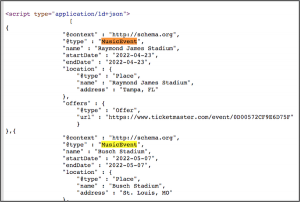— July 20, 2018

Free-Photos / Pixabay
Websites that accept guest posts might need to rethink their editorial policies, now that the internet is populated by many bloggers who are charging fees for exposure.
This phenomenon was highlighted by a Buzzfeed News article, which investigated the activities of Jayson DeMers, who has contributed many articles to publications like Forbes, Entrepreneur, Inc.com, Mashable and many more.
Those publications thrive on content written by contributors like DeMers and, of course, any publication that expects writers to contribute for free must know that there is a commercial trade-off. Why would someone give content away?
Those publications perhaps don’t question the trade-off too much, because they would assume the writer is looking to raise their profile to gain personal authority for their own blog.
Jayson DeMers and AudienceBloom
Buzzfeed News’ story explained that DeMers’ writer profile on Forbes did not state that, as CEO for AudienceBloom, he charges people money for mentioning them in his articles.
Here’s a segment from that article, which you can read in full here: “What’s missing from that bio, and from all of his articles, is the disclosure that AudienceBloom offers clients a service in which it secures ‘brand mentions’ about them in ‘major media publications’ – often thanks to DeMers himself promoting clients in his articles.
“BuzzFeed News documented more than 20 instances in which DeMers referenced and linked back to clients associated with AudienceBloom without disclosing a relationship. BuzzFeed News also obtained an email pitch from an AudienceBloom employee to a potential client in which he offered the ability for them to review an article with a brand mention before it was published. The pitch said a mention with a link back in a ‘premium tier’ publication like Mashable would cost between $ 1,200 and $ 2,000.”
Buzzfeed News goes on to say that some of the publishers it contacted removed or edited some or all of the content and a couple at least have stopped working with DeMers.

While writing this article, I searched Google for Audience Bloom and noticed that the second suggested query is “pricing”, which means this agency has been active in selling content placement.
When journalism contains a conflict of commercial interest
A journalist or blogger may believe in their topic and only write about things they believe to be true. Bloggers who sell exposure as a service may only give exposure to customers they believe deserve it. There are, though, clear rules – both legal and moral.
- Google’s Webmaster Guidelines are clear about link schemes. “Any links intended to manipulate PageRank or a site’s ranking in Google search results may be considered part of a link scheme and a violation of Google’s Webmaster Guidelines. This includes any behavior that manipulates links to your site or outgoing links from your site.”
- The Advertising Standards Authority (ASA) has rules about native advertising. Being paid to write a blog and post it on a major publication would constitute native advertising. It should be flagged as sponsored content, or at least the writer should declare a commercial interest in the thing they are talking about.
- Even the aforementioned Buzzfeed, ironically, has fallen foul of this. The BBC has reported that an article was banned by the ASA because it contained a native ad that was not signposted as an ad. “BuzzFeed UK said the lack of ASA rulings about this type of native advertising in the UK meant the company relied on US practices to work out how advertorials are labelled, and that they had used the words ‘promoted by’ and ‘advertiser’ next to Dylon on its homepage and search pages. But the ASA banned it. It said that this explanation was not good enough, because only people who clicked through from BuzzFeed’s home page and search listings would know they were about to view an ad.”
- How to label sponsored content is debatable. The Guardian, which itself has a sponsored content department, has explored this topic. “There is no industry standard; instead a taxonomical mess to describe the various species of paid-for content depending on the depth of the commercial partners’ involvement and control over the final product. In the spirit of transparency over who is paying for content – and what degree of control they are buying – the Guardian has published its glossary of terms.”
The ASA investigated a Snickers campaign in 2012 featuring Katie Price, Rio Ferdinand and Ian Botham – initially thinking of them as undeclared ads, but it later ruled that the campaign was OK.
Publishers need to take more responsibility
In the arms race to publish as much content as possible, large publishers need to rely on an army of providers who will create their content for them. They can’t pay for it all, so that content needs to be free and the providers of that content need to see a value in providing it.
However, publishers should take more care not to be duped by writers who are earning money from third parties off the back of the publication.
Many publishers, large and small, pay for exposure on their own site. If someone pays you to publish content, it should be regarded as advertorial and marked as such.
This does not mean every link or brand mention needs to be declared as a commercial interest. The BBC has clear rules about commerciality in its TV programmes, but brands are mentioned frequently without being declared as adverts. The line is drawn between editorial value and commercial interest.
I’ve mentioned about eight or nine brands in this blog post, and linked to several of them. They all benefit, presumably, from those mentions and links, but for me there is only editorial value in doing so.
Digital & Social Articles on Business 2 Community
(26)




